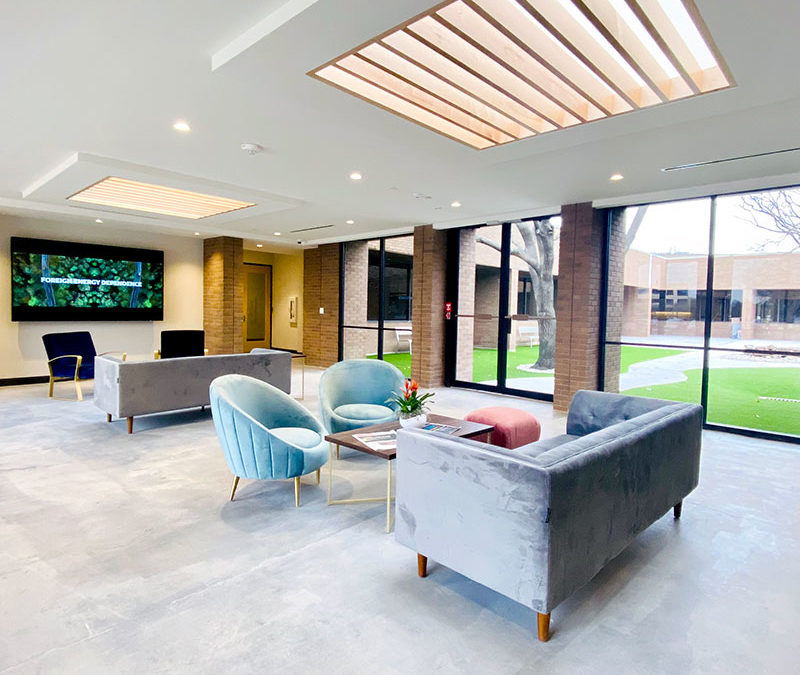So What is a coworking or shared workspace? Who uses these spaces? What are the alternatives? Let’s get back to the basics of coworking spaces.
At the start of last year, Liz Elam, the founder, and producer of GCUC, the largest coworking conference series in the world, predicted coworking will replace the traditional office.
And even if skeptics want to take a more measured approach, business data platform Statista estimates a surge in coworking spaces, noting the spike in the last decade of coworking space adoption.
What is a Coworking or Shared Workspace?
A coworking space is a neutral space that allows people from different companies to work in the same location. Professionals in a coworking space may be working together with a handful of colleagues or independently.
While coworking shares some similarities in an office environment, it does offer some distinguishing features as well.
How coworking is like an office environment
Despite all the buzz flying around about coworking, a coworking space is still a professional office environment – it’s just home to office workers from several companies sharing the space, instead of dedicated to one business.
The infrastructure, including equipment, utilities, receptionists, and janitorial services are available in coworking spaces. Many also offer perks like access to tea or coffee or an onsite gym.
Breaking the traditional office mold
Of course, not all coworking spaces are created equally, but the core foundation of any coworking space is the flexibility it offers. Unlike traditional offices which are locked years-long corporate rental agreements, coworking spaces offer flexible, short term leases.
Beyond that, it’s really up to the coworking space. For example, HEXA looks after the whole person, catering not just to professional needs, but also to the very real need for physical, mental, and spiritual health to function best, and offers amenities to support each of those aspects, along with funding support and expertise to cultivate our members’ businesses.
Who Uses Coworking Spaces?
The short answer is all kinds of professionals.
Yes, freelancers, entrepreneurs, and remote workers use coworking spaces to avoid the isolation of working at home and network with other like-minded people. But small businesses, non-profits, and even enterprises have all embraced coworking spaces for the flexibility and cost savings available.
Although everyone shows up to work, members in a coworking space can enjoy networking, brainstorming with, and learning from their fellow coworkers – and just cultivating a community of other professionals, some in entirely different roles and industries.
What are alternatives to coworking?
For enterprises, small business, and nonprofits, the answer is typically the corporate lease. And for remote employees, entrepreneurs, and freelancers, most people (84%) end up working from home, while the rest work from coffee shops and cafes or libraries.
What do you need from your Coworking space?
Whether you’re launching a new business and looking to get out of the house or sending a team of employees to get out of the corporate office and focus on a key project, here are some tips for selecting a coworking space that meets your needs.
-
- Check your commute. Whether you need to catch regular flights or just make it home for dinner on time, understanding what the trek to space looks like is an important consideration. Look for centrally located spaces, and think about how easy it will be to host meetings or meet clients or colleagues in the surrounding area.
-
- Establish a budget. Understand both your budget and the resources you need. Flexible options can help you meet your budget needs and avoid paying for extras that don’t matter as much for your business.
-
- Identify the work environment you want. Do you need a private or semi-private office? Access to conference rooms or training facilities? Assessing all your needs will help you pick a coworking space that can meet them.
-
- Assess your support needs. Does your business need marketing and sales support? A physical mailing address? Access to funding? Taking an inventory of all the areas that your business needs help identify the right coworking space and the right membership level once you’re there.
- Determine how you unwind. Working is obviously critical in a coworking space. But so is the resting and holistic support that can offer the headspace for real inspiration and innovation. Does nature ignite your thinking? Does a quick session at the gym fuel your motivation? Does a power nap fuel your problem-solving? Don’t settle for a coworking space that won’t support you or your employees as a whole person.
Interested in learning more about coworking spaces?
We’d love to show you around HEXA or talk about the different ways we can help build your business. Contact us today at info@hexatx.com to get started.

